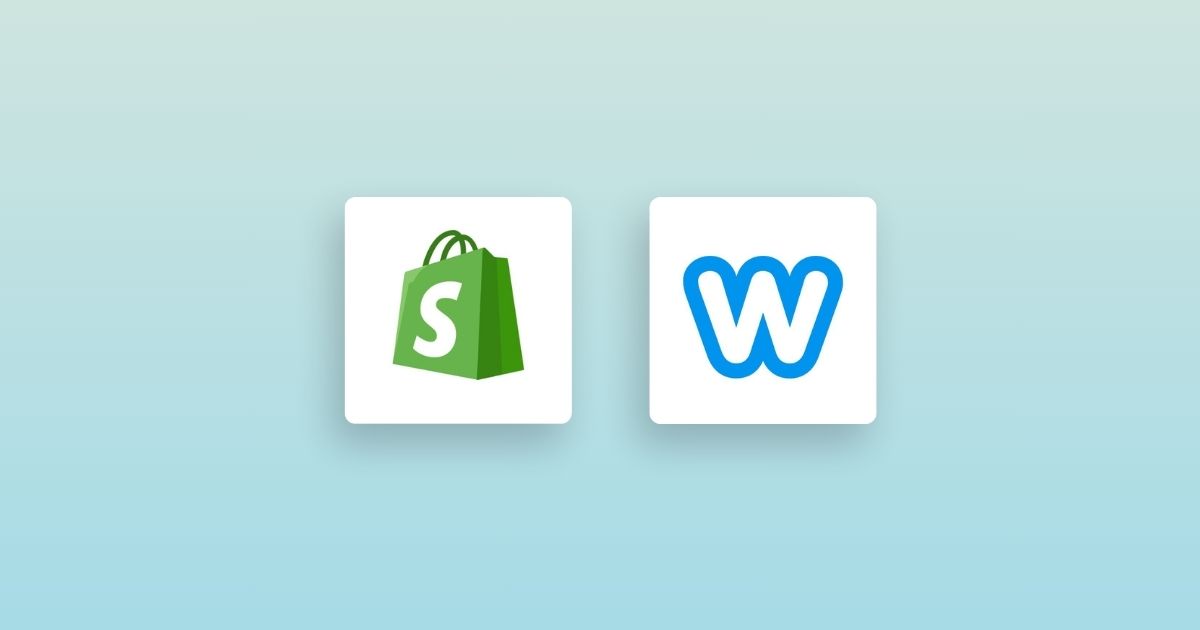
For people plunging into the digital marketplace, the question often bubbles up: Weebly vs. Shopify – which is the crowned champion of ecommerce solutions?
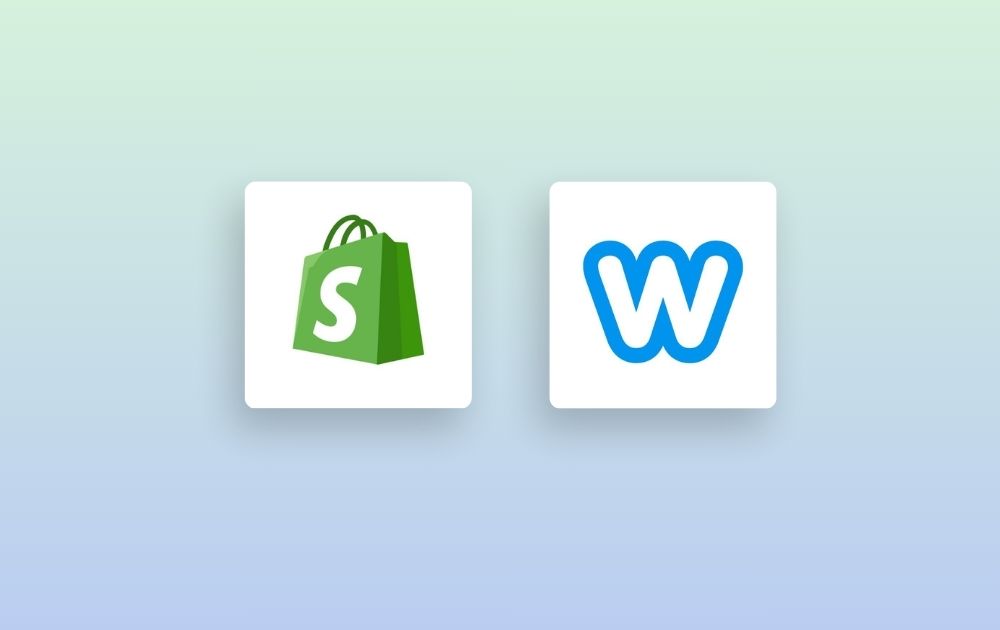
Both giants offer a stage to showcase your products, but choosing the right backdrop can set the tone for your entire performance.
In this comparison, we’ll dissect their features, dive deep into user experiences, and help you choose an ecommerce platform that best fits your business rhythm.
What is Weebly?
Weebly was founded in 2006 by CEO David Rusenko, CTO Chris Fanini, and former CPO Dan Veltri. The company began its journey as a simple website builder.
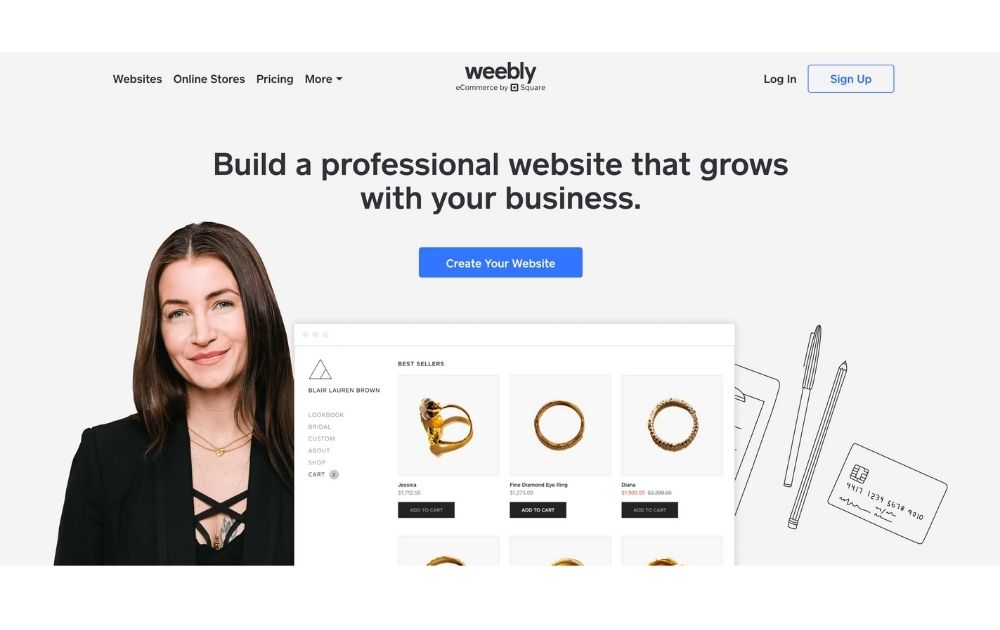
Over the years, it has evolved into a powerful platform that caters to a diverse range of users, from bloggers to small business owners.
In 2018, Weebly was acquired by Square, which further boosted its capabilities, especially in the realm of ecommerce.
What is Shopify?
Born in 2006, Shopify sprouted from a team in Ottawa, Canada, that was frustrated by the existing ecommerce solutions while trying to open an online snowboard store.

Tobias Lütke, Daniel Weinand, and Scott Lake transformed their personal need into a global ecommerce solution.
Shopify’s commitment to providing a complete toolkit for online sellers, from inventory management to payment gateways, has seen it skyrocket in popularity.
Weebly vs. Shopify: Ease of Use and Customization
When it comes to building and managing an online store, the user experience can make or break the process.
Known for its drag-and-drop interface, Weebly offers an intuitive approach to website creation. Users can easily select elements and drag them to the desired location on their page. To a newbie website owner, this feature offers huge value, including:
- Customizable sections
- Media integration
- Form builder
- Ecommerce elements
This simplicity is a boon for those who are new to website building or those who want a hassle-free experience.
Shopify‘s dashboard, while slightly more complex than Weebly’s, is designed with the ecommerce entrepreneur in mind. It provides a structured dashboard layout where users can do tasks, including:
- Oversee orders
- View customer data
- Manage inventory
- Set up marketing campaigns
The platform does have a learning curve, especially for those unfamiliar with ecommerce jargon. However, Shopify offers many tutorials and guides to assist newcomers.
Weebly vs. Shopify: Website Customization and Design
Both platforms recognize that the visual appeal and functionality of an online store can play a pivotal role in attracting and retaining customers.
Weebly offers a selection of responsive templates suitable for various business types. While their collection might not be as vast as some competitors, the templates are modern and can be easily customized.
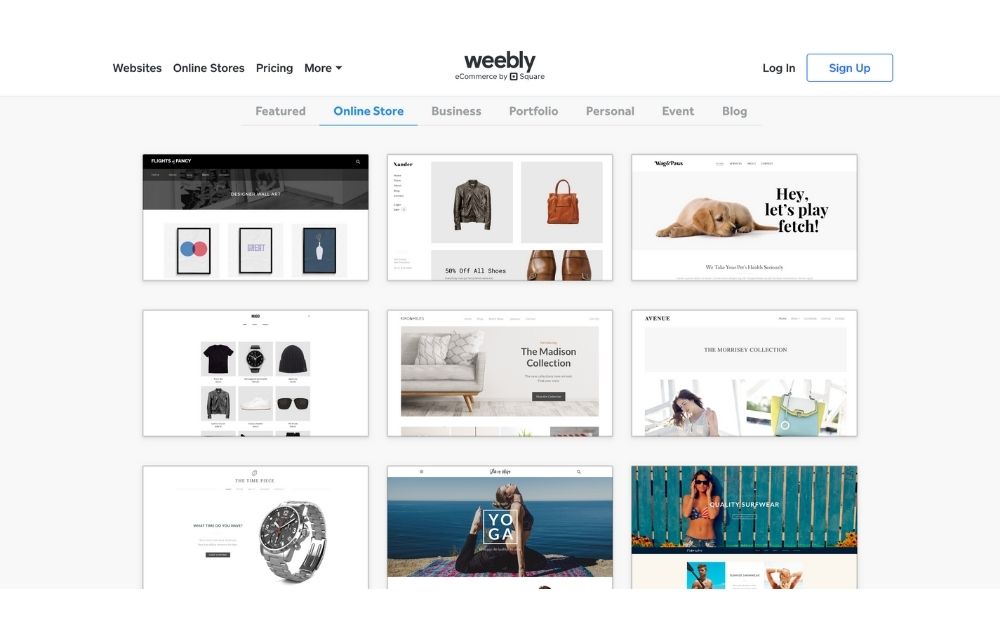
As mentioned earlier, Weebly’s primary strength lies in its intuitive drag-and-drop builder. This tool lets users move elements, change layouts, and modify sections easily, making website design a breeze even for novices.
Shopify, on the other hand, boasts an extensive Theme Store where users can choose from a myriad of professionally designed themes. Both free and premium options are available, catering to a wide range of aesthetic tastes and industry needs.
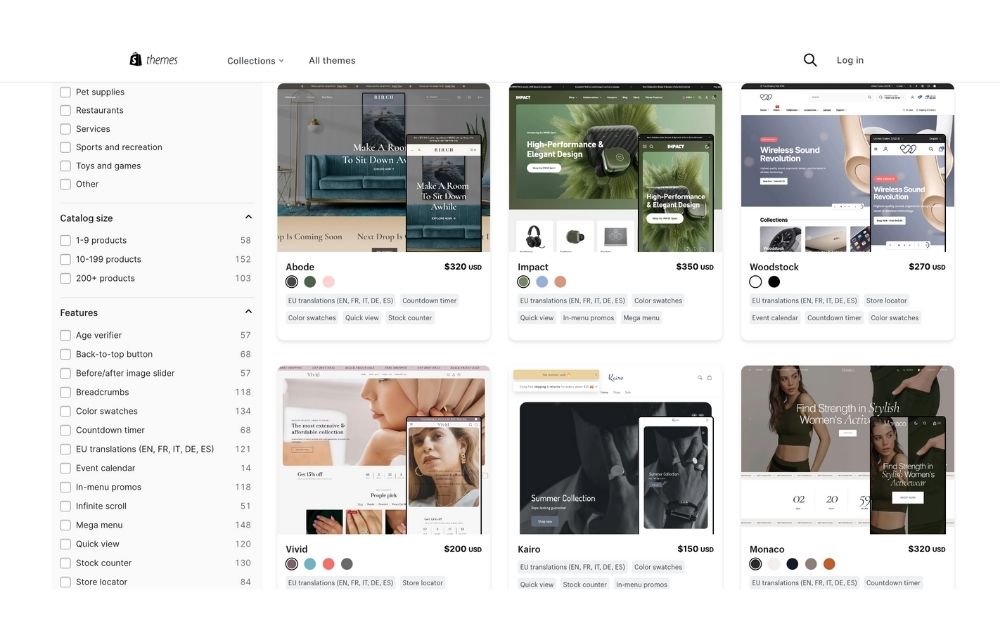
While Shopify’s editor might have a steeper learning curve than Weebly’s, it offers profound customization options. Users can adjust layouts, colors, fonts, and more to fit their brand.
Weebly vs. Shopify: Ecommerce Capabilities
Ecommerce capabilities can significantly influence the success of an online store. Here’s what both platforms have to offer as to ecommerce features.
Weebly
- Simplicity for Small Stores. Weebly’s ecommerce tools are easy to grasp, making it suitable for small businesses or hobbyists looking to dip their toes into online selling.
- Payment Processing. Weebly, after being acquired by Square, seamlessly integrates with Square’s payment processing, providing a unified solution for both online and physical sales.
- SEO and Marketing. The platform has basic tools for SEO included, along with email marketing integrations and simple advertising features.
Shopify
- Ecommerce First Approach. Even in Shopify vs. Wix vs. Squarespace comparison, Shopify’s ecommerce capabilities are comprehensive, catering to businesses of all sizes, from startups to large-scale operations.
- Advanced Inventory Management. Users can track stock levels, set up automated restocking alerts, and manage products across multiple channels and warehouses.
- Variety of Payment Gateways. Shopify offers its payment solution, Shopify Payments, and integrates with a myriad of third-party payment gateways. This broad spectrum of payment methods ensures that users can cater to a global clientele, making it a compelling choice in the Stripe vs. Shopify payment discussion.
Weebly vs. Shopify: Pricing Comparison
Here’s an aspect tackled in many Weebly vs. Shopify Reddit discussions – the price tag.
Weebly offers a basic free plan that allows users to set up a simple website. However, this plan offers limited storage space and can’t be connected to a custom domain name.
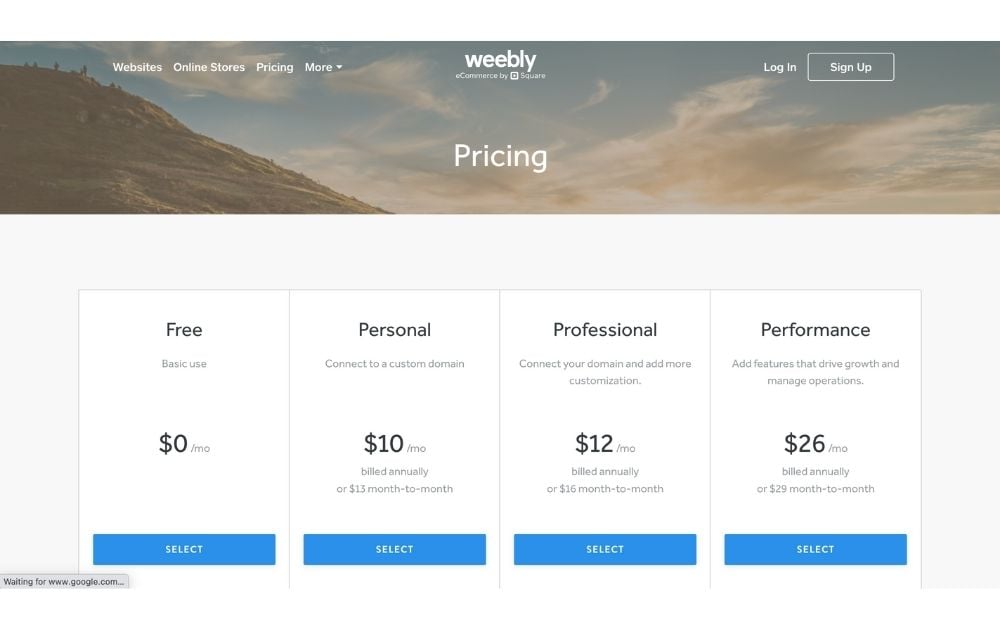
Shopify, on the other hand, does not offer a permanent free plan. However, they provide a 14-day free trial for users to test the platform’s features.
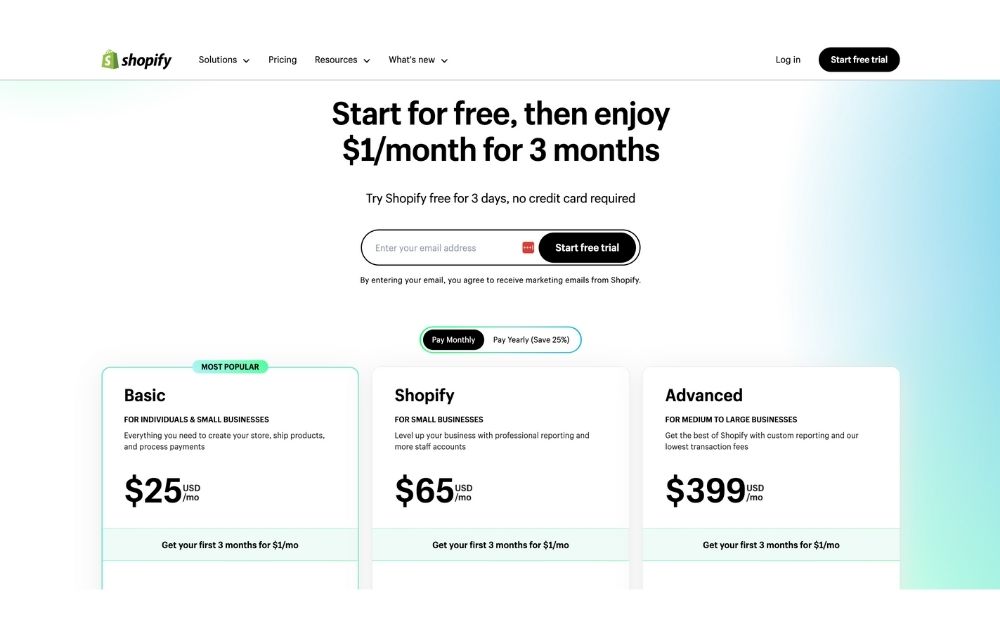
Frequently Asked Questions (FAQs)
Is Weebly cheaper than Shopify?
On a monthly basis and when comparing their ecommerce-specific plans, Weebly generally comes out as the cheaper option. However, it’s essential to note that while Weebly might be more affordable, Shopify offers a more comprehensive set of ecommerce tools, even on its basic plan.
Is Weebly the same as Shopify?
No, Weebly and Shopify are distinct platforms. While both offer tools to create online stores, Weebly started as a website builder with drag-and-drop functionality, catering mainly to simple websites and basic online stores. On the other hand, Shopify was designed specifically for ecommerce from the outset.
The Bottom Line
Here’s a summary of our Weebly vs. Shopify review:
- Ease of Use. Weebly is user-friendly with drag-and-drop features, while Shopify has a slight learning curve since it’s structured for e-commerce.
- Design. Weebly has modern, responsive templates with intuitive design tools, while Shopify provides extensive and highly customizable theme options.
- Ecommerce Capabilities. Weebly offers simplified tools and integrates with Square, while Shopify provides a comprehensive suite from inventory to diverse payment gateways.
- Pricing. Weebly offers a basic free plan, while Shopify provides a 14-day trial with no permanent free plan.
While both platforms have their merits, the right choice boils down to individual business needs and priorities. As you take a step forward in shaping your online store, remember that an engaging design can be a game-changer.
If you’re seeking standout visuals for your platform of choice, check out Penji. Our team of skilled designers is ready to breathe life into your ecommerce vision. See how Penji is helping ecommerce brands level up.
About the author

Carla Deña
Carla is a journalist and content writer who produces stories for both digital and legacy media. She is passionate about creativity, innovation, and helping small businesses explore solutions that drive growth and social impact.
Table of Contents
- What is Weebly?
- What is Shopify?
- Weebly vs. Shopify: Ease of Use and Customization
- Weebly vs. Shopify: Website Customization and Design
- Weebly vs. Shopify: Ecommerce Capabilities
- Weebly
- Shopify
- Weebly vs. Shopify: Pricing Comparison
- Frequently Asked Questions (FAQs)
- Is Weebly cheaper than Shopify?
- Is Weebly the same as Shopify?
- The Bottom Line










